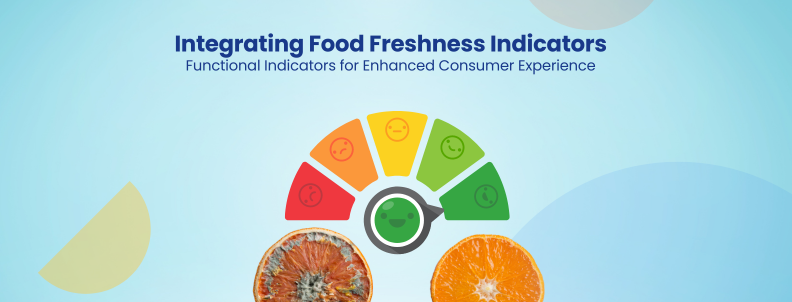Packaging is transforming from a passive protector to a dynamic feedback system. Companies now have the power to proactively manage spoilage, reduce waste, and enhance consumer trust—all through packaging that functions like a health monitor for food. Food quality indicators, including oxygen depletion monitors, RFID tags, and freshness sensors, enable real-time tracking of product health, offering significant advantages in reducing spoilage and ensuring safety.
As the industry pivots toward digitalization and sustainability, integrating these advanced solutions will be critical for businesses looking to stay competitive.
This analysis explores the recent advancements in functional indicators in packaging. However, our Packaging Report 2025 will further explore trends like refillable, modified atmosphere, and minimalist packaging and their role in the sustainability and digitization of the packaging industry.

Advanced Functional Food Quality Indicators Transforming Packaging
These eco-friendly indicators come in various forms, each designed to provide specific information about the product:
- Dynamic Colorimetric Indicators: Leveraging specialized dyes or inks, these indicators offer real-time data on environmental factors like temperature shifts and time-based degradation. By undergoing color changes, these systems provide immediate, visual insights into product freshness and spoilage risks, allowing for precise shelf-life management—beyond traditional expiration labels.
- Gas Sensing Technology: These integrated advanced gas sensors within packaging detect volatile organic compounds (VOCs) or toxic gases emitted during spoilage. By monitoring the buildup of gases like CO₂ and ethylene, these sensors deliver early spoilage alerts, enabling both retailers and consumers to act before visible or olfactory signs appear—critical for reducing food waste.
- Microbial Indicators: Bio-based indicators that detect pathogenic bacteria or microbial activity provide a proactive solution for food safety. These systems trigger a change in color, texture, or other physical properties upon exposure to harmful microorganisms, ensuring real-time contamination detection and enhancing food safety protocols at every step of the supply chain.
Leading Innovators in Functional Food Quality Indicators Packaging
Research institutions and companies are actively driving advancements in this area, as shown by the growing number of patents they are filing.
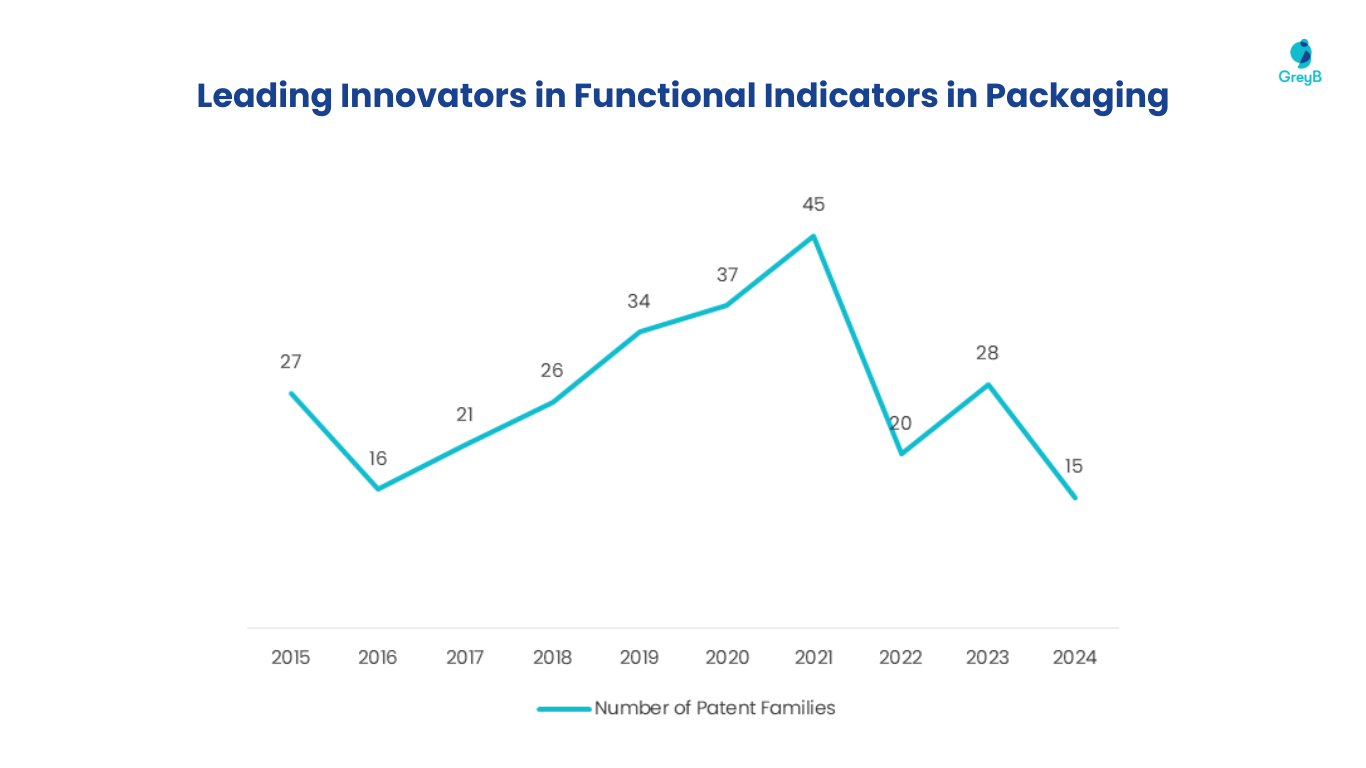
Notably, the VTT Technical Research Centre of Finland and the Korea Food Research Institute are the leading innovation in this technology. As state-funded research institutions with a strong emphasis on R&D in the food and packaging sectors, their active involvement highlights the promising potential of smart label indicators as a key area of technological advancement with significant prospects for future commercialization.
Real-world Applications of Functional Food Quality Indicators in Packaging
Innovative Food Packaging Sheet that Prevents Freezing and Indicates Decomposition
Tokai and Kansai University have developed a food packaging sheet to prevent food from solidifying at temperatures below 0°C while indicating the extent of food decomposition.
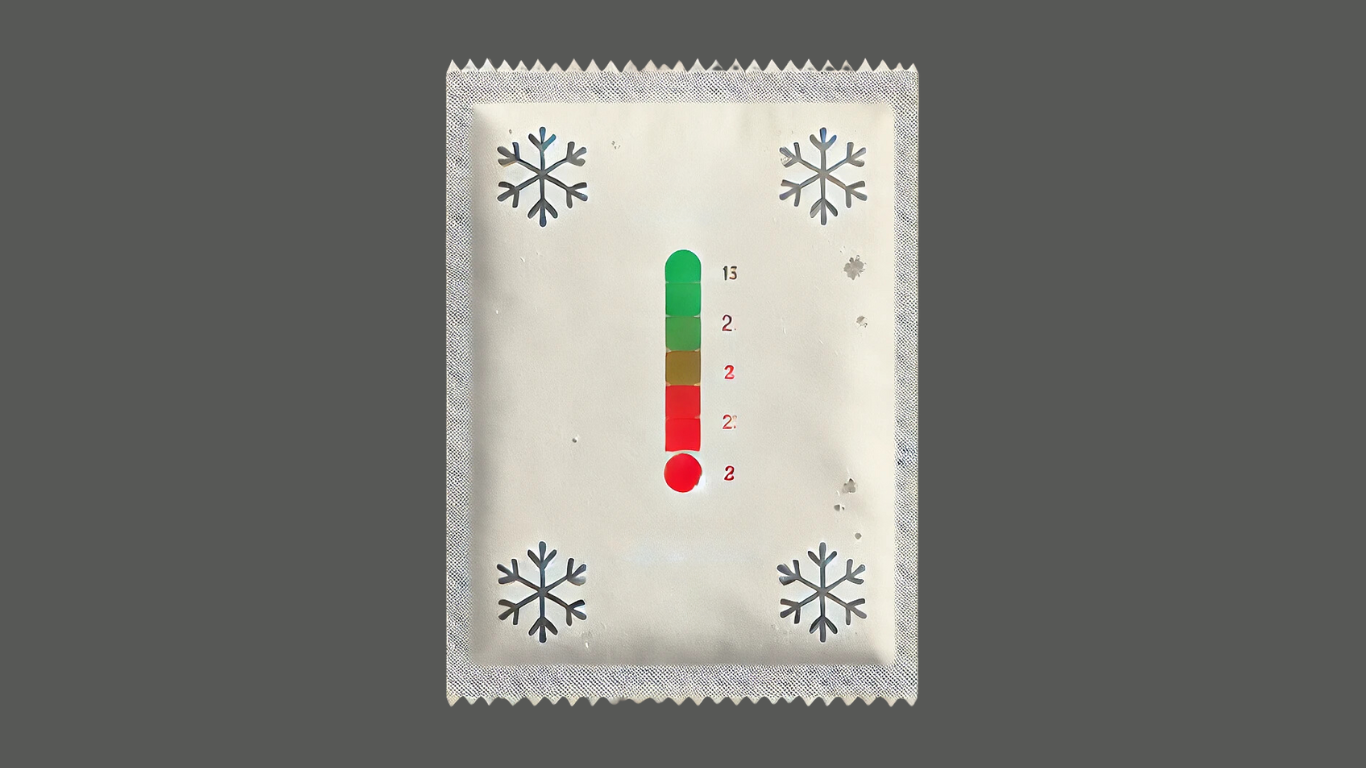
Key Highlights of the innovation-
- This sheet has a layer that shows when food starts to decompose and another layer with a peptide to prevent freezing. Alternatively, the sheet can combine both functions in one non-freezing layer with the indicator and peptide. The invention also includes an indicator within the packaging sheet that effectively signals the degree of food decomposition.
- The packaging sheet can be made from various materials, including synthetic resins, biodegradable resins (such as polyvinyl alcohol and polylactic acid), and animal/plant polymers like collagen and chitosan. This offers flexibility in tailoring the packaging for different food types while keeping it sustainable and eco-friendly.
- One notable feature is the option for the packaging to be edible or water-soluble. This aligns with growing trends in sustainable packaging. This can either be consumed with the food or washed away, addressing the issue of waste reduction.
- The innovation leverages ammonia as a key indicator of food decomposition, using pH-sensitive dyes like anthocyanins that change color to signal spoilage. This enhances real-time monitoring for both consumers and supply chains.
Improving Perishable Product Tracking in the Supply Chain Using Adaptive Labels
West Pak Avocado LLC has developed a supply chain management system with adaptive labels for perishable products.

Key Highlights of the innovation-
- These labels use visible and invisible ink that changes based on environmental conditions like temperature and humidity.
- As products move through the supply chain, processing waypoints activate the invisible ink, revealing information encoded on the label in invisible ink.
- This system helps track processing steps, identify spoilage, and reroute products based on real-time conditions.
Printable Freshness Sensors for Real-Time Monitoring of Perishable Items
Kroger Co. has developed printable freshness sensors that track the freshness of perishable items in real time.
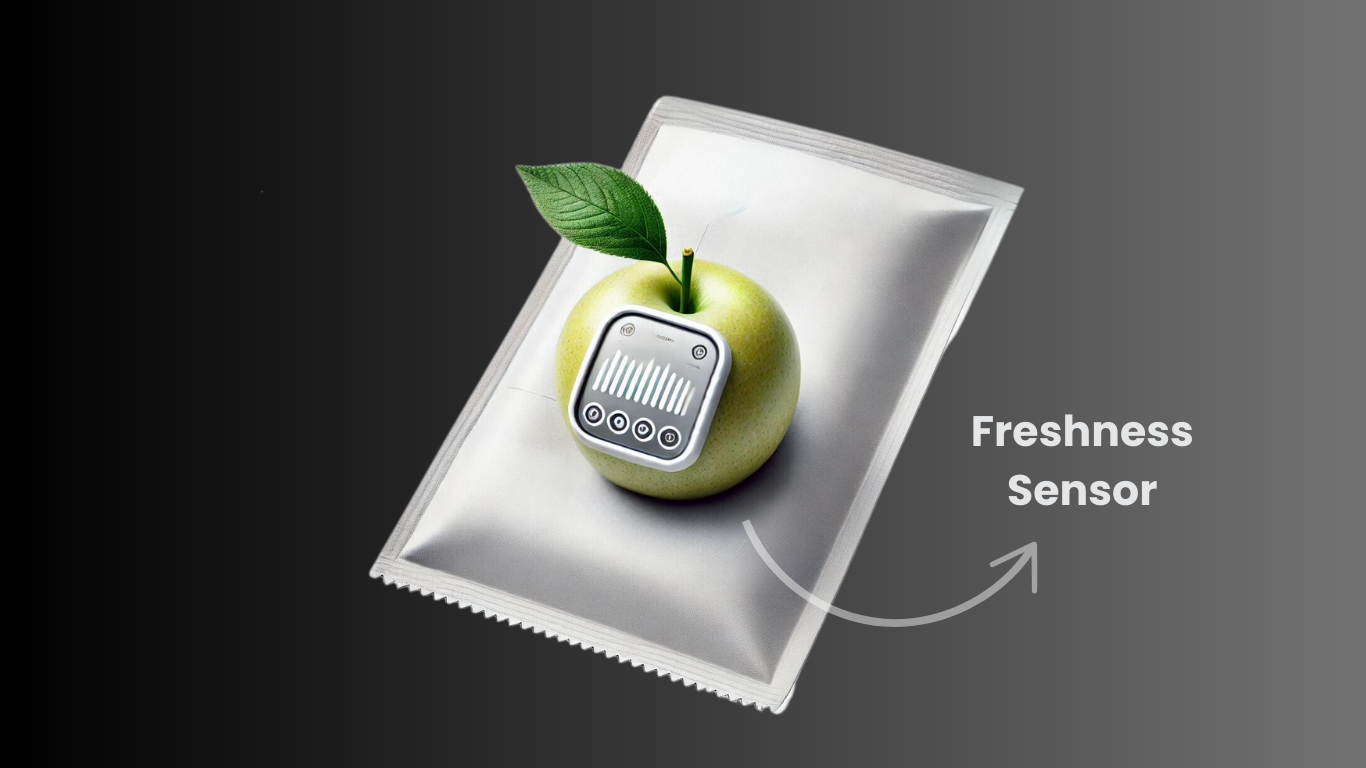
Key highlights of the innovation-
- These sensors can be printed onto substrates like paper, making them easy to integrate into labels, packaging, or directly onto products.
- They detect analytes such as amines and TVB-N compounds released during decay and bacterial growth. The sensors then convert this data into signals that are transmitted wirelessly.
- The receiving devices analyze these signals to determine freshness levels, enabling real-time monitoring of the item’s freshness throughout its entire journey from production to consumption.
There is no specific public announcement regarding large-scale commercialization. However, Kroger has been actively working on various technology partnerships and innovations to push its freshness initiatives forward. For instance, Kroger has collaborated with NVIDIA to enhance its tech capabilities, including AI-based freshness management in stores.
The freshness detection technology mentioned in the patent integrates wireless sensor data with real-time monitoring systems. This allows for potential use across a variety of perishable goods in the grocery sector. It further aligns well with Kroger’s broader strategy of leveraging IoT and AI technologies to optimize the customer experience and enhance product quality. Although direct adoption or partnerships focused solely on this sensor technology haven’t been widely publicized, it’s clear that Kroger is incorporating advanced tech solutions into its freshness management processes.
Multifunctional Thermal Indicator for Enhanced Temperature Monitoring of Packaged Medications
Starkrug LLC has created a multifunctional thermal exposure indicator to monitor the temperature and thermal load of packaged items, such as medications.
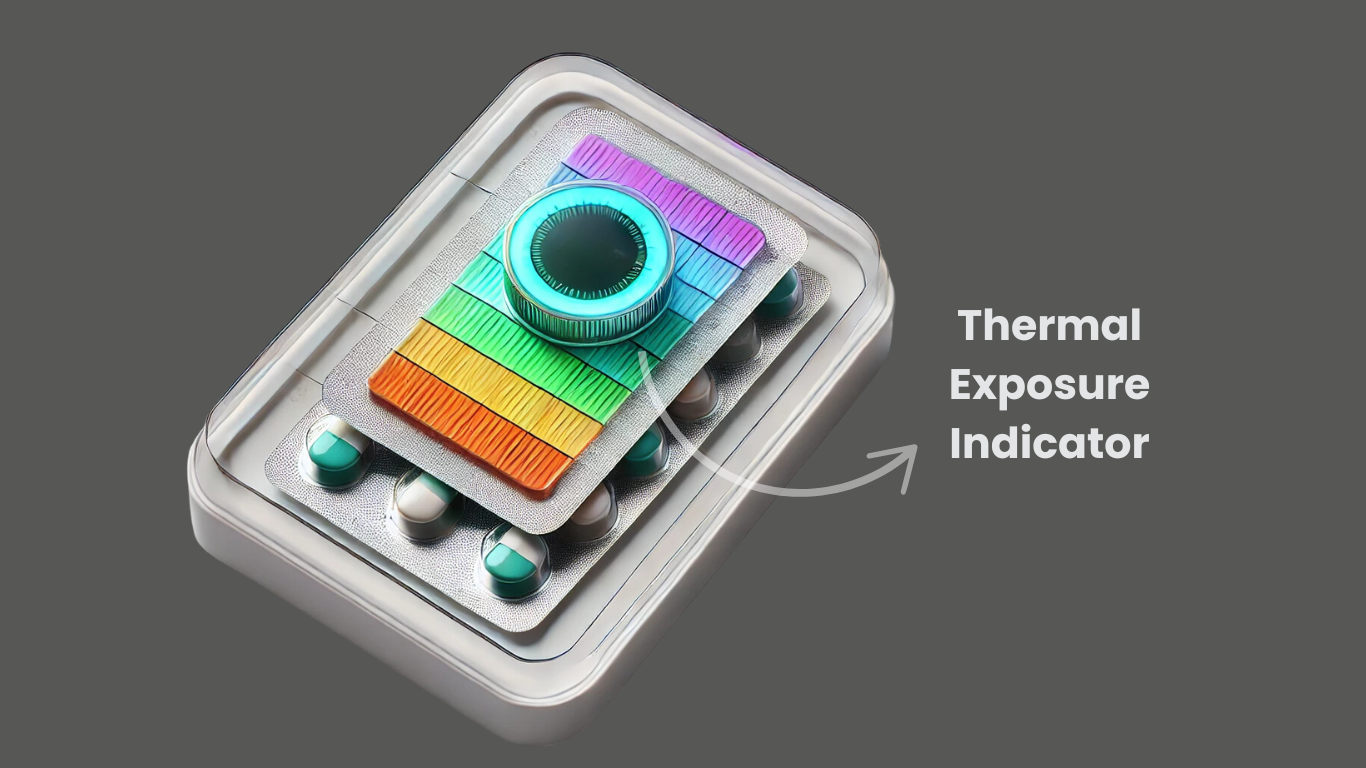
Key insights from the innovation-
- The indicator features multiple layers with thermochromic pigments that change color in reversible, semi-reversible, and irreversible ways at various temperature thresholds.
- This design distinguishes between temporary temperature fluctuations and permanent degradation.
- The layers adhere to a reflective base and are protected by a transparent cover, making them suitable for packaging.
- The indicator can be integrated into various products, including packaging and logistics systems, to ensure temperature-sensitive goods are stored and transported under optimal conditions.
The patent’s inclusion of insulin indicates a clear direction toward an application in healthcare, where ensuring the correct storage conditions for medicines like insulin is crucial. Additionally, because the technology uses multilayer indicators that can handle exposure to both hot and cold temperatures, it’s well-suited for cold-chain logistics, where maintaining precise temperature conditions during the distribution of goods is critical.
Path Forward
Companies that seamlessly merge technology with consumer needs will drive the future of packaging with integrated functional indicators. As the demand for intelligent packaging grows, the industry will see increased pressure on R&D heads to balance technological feasibility with cost-effectiveness and regulatory compliance.
Successfully navigating these complexities requires a clear strategy, from selecting appropriate materials to understanding patent landscapes and optimizing implementation. Position yourself as a leader in this evolving market. Click the button below to schedule a consultation with GreyB’s expert packaging consultants.
Authored By – Sukha Singh and Aman Maurya, Patent Analytics
Edited By – Ridhima, Market Research
Also read – 5 Intelligent Packaging Solutions and Startups Working on Them

